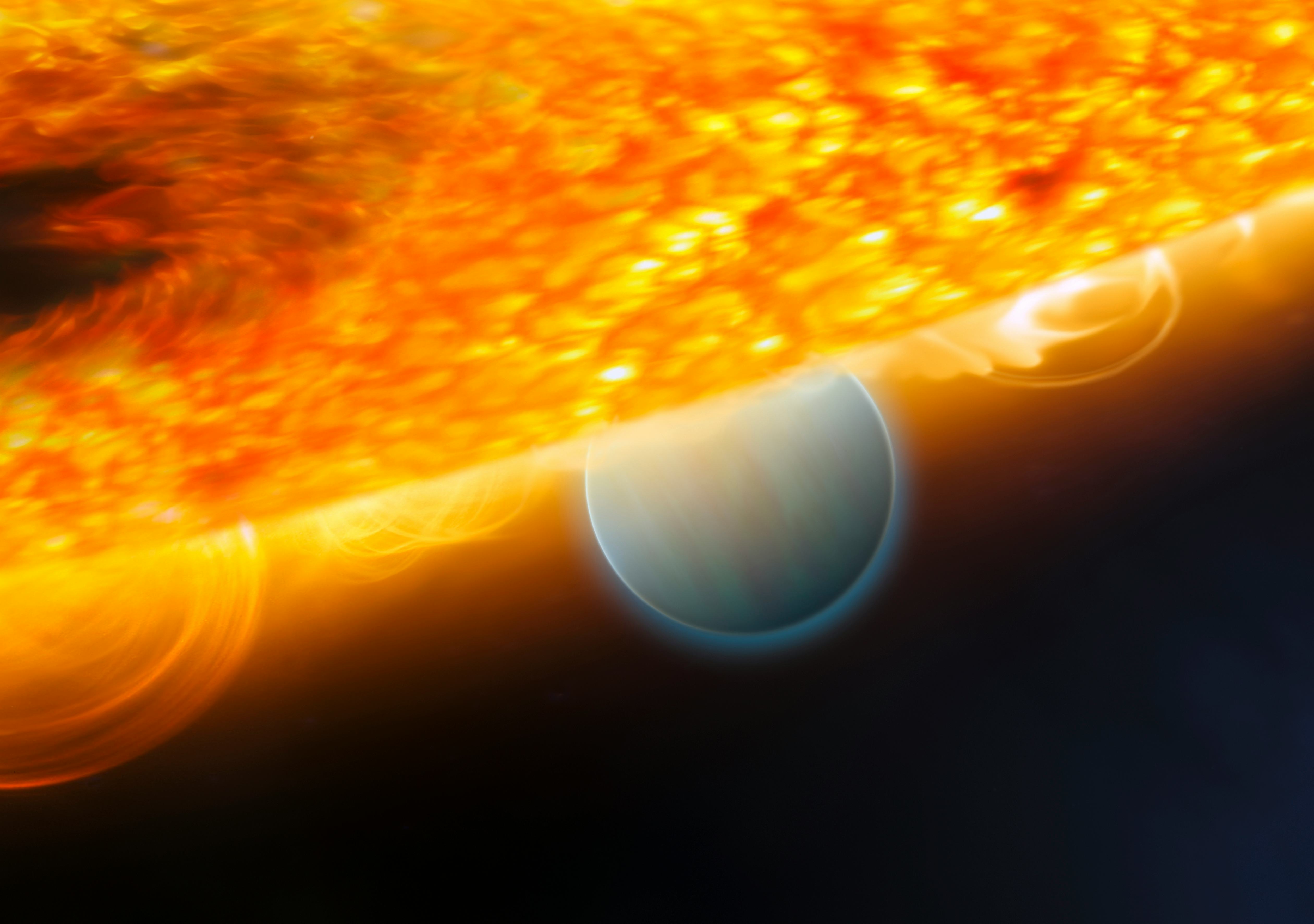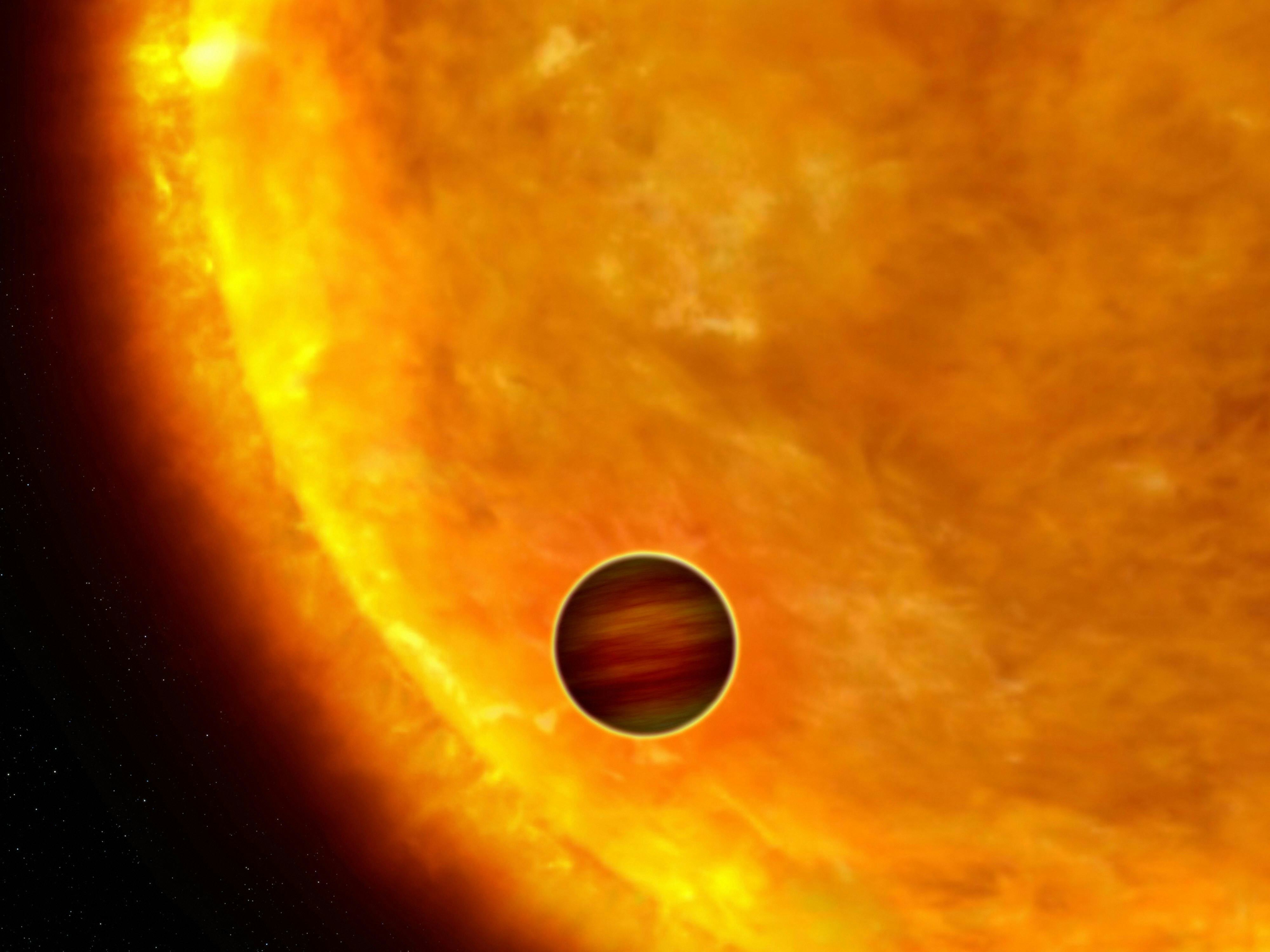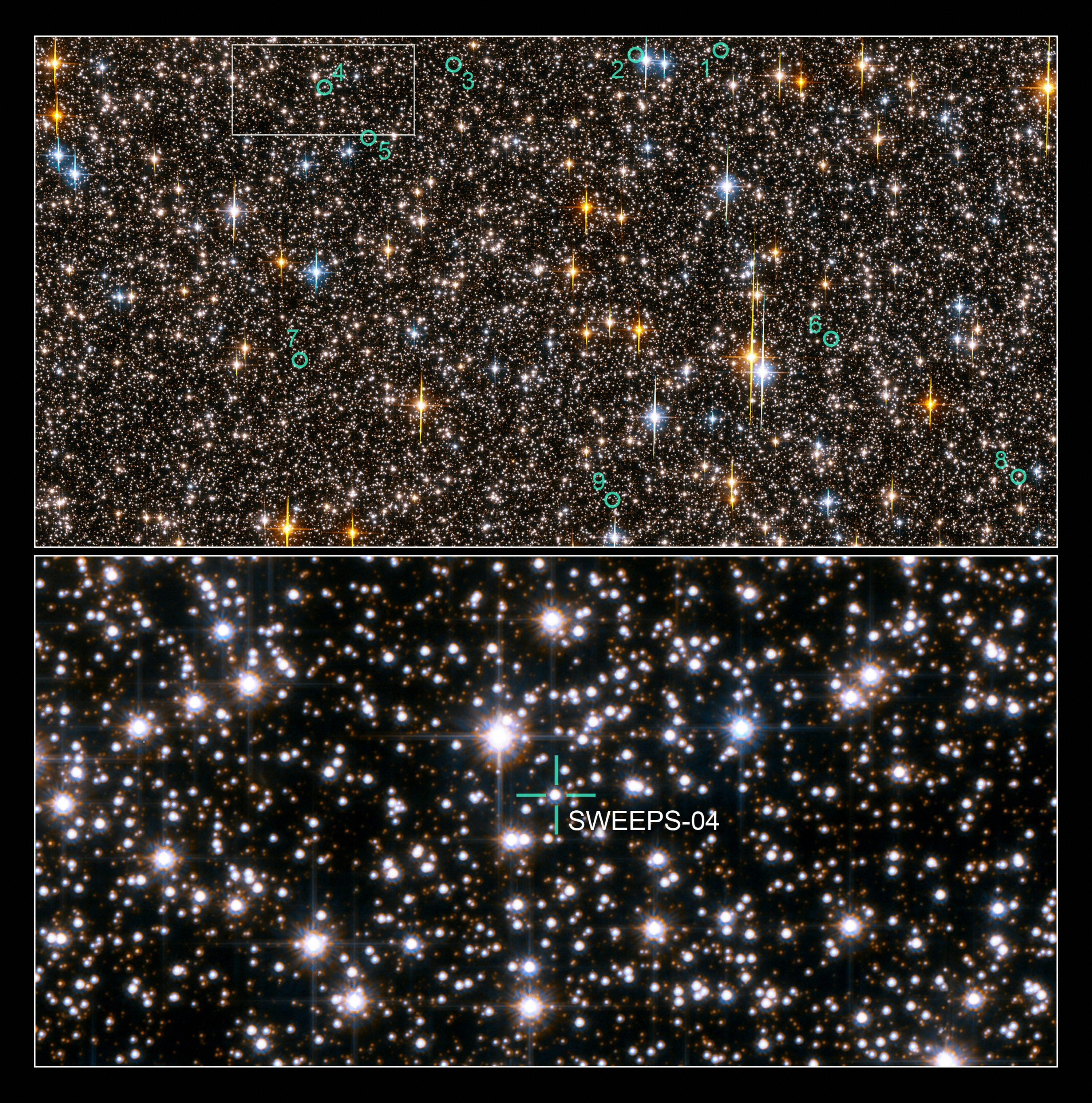
Our Solar System is missing one of the most common types of planets in the universe: Hot Jupiters.
As the name suggests, these gas giants are much like our Jupiter in the outer Solar System but, instead, orbit daringly close to their host stars. In fact, hot Jupiters circle so closely that the star’s heat inflates the planet’s atmosphere to several times its original size while roaring winds rush from the scorching dayside to the cooler nightside of the planet at thousands of miles an hour.
And, according to a new study, hot Jupiters are much more common around younger stars — partially because they don’t live long enough to orbit older ones. The result could shed light on how these hot, fluffy, and extraordinarily common gas giants form. Nanjing University astronomer Di-Chang Chen and his colleagues published their work in the journal Proceedings of the National Academy of Science.

Scorching Hot Statistics
Chen and his team recently compared 383 giant planets orbiting stars similar to our Sun. Some 193 of those gas giants orbited close enough to count as hot Jupiters (in other words, a planet at least the size of Jupiter makes a full lap around its star in ten days or less). The researchers calculated the ages of each planet’s host star, and while gas giants show up around stars of all ages, hot Jupiters, in particular, prefer younger stars.
Stars with hot Jupiters are about 2 billion years younger than stars with… well, regular Jupiters. And the odds of finding a hot Jupiter drop dramatically as the star gets older. Those numbers reflect a brutal fact of life for planets that choose the hot Jupiter path, as many of them eventually fall into their stars when their orbits decay.
“Due to tidal decay, some hot Jupiters may inject into the Roche limit within stellar lifetimes and get tidally disrupted,” the researchers write. The Roche limit is the closest an object can get to a star without being ripped apart by its tidal forces. “Such a process could naturally result in a declining frequency of hot Jupiters as a function of age, like the observed trend found in our work.”
In other words, older stars that once had a hot Jupiter may already have eaten their offspring.
But the team’s findings also show why some star systems have gas giants in weird places. Whether hot Jupiters form close to their stars or migrate from farther out, Chen’s team suggests that they have to form early or migrate early. Otherwise, we would see more hot Jupiters around older stars than we do.
This new study provides theorists with one more way to test models of how planets form.

How to Install a Gas Giant
Scientists aren’t sure (yet) why so many gas giants end up so close to their stars, but they’ve narrowed down a few possible explanations, using examples like WASP-39b or 51 Pegasi b.
The simplest version is that when gas giants coalesce out of a star’s protoplanetary disk, sometimes they just form very close to the star — but it’s not always so simple. Some other hot Jupiters may start their lives as regular Jupiters looming in the outer reaches of their star systems, but gravitational pushes and pulls from other planets — or even currents in the gas around a newborn star — shift the planet’s orbit inward.
This new study says that for either of those things to happen, the gas giants would have to form within the first ten million years of the star’s life. Otherwise, the disk of gas around the star is either eaten up by planets or blown away by stellar wind. In other words, the gas has to be there, whether it’s providing material for the growing gas giant or providing the cosmic current that steers one closer to its star. Both of those scenarios help explain why hot Jupiters would form around younger stars rather than older ones.
However, there is a third hypothesis that explains how hot Jupiters orbit their stars, but data from this study appears to disprove it. This version of the story suggests that instead of pushing the gas giant inward, gravitational nudges pull the planet into an orbit that looks like a long, lopsided oval, with one end much closer to the star than the other. The star’s gravity tugs at the passing planet with every lap it makes, and eventually, the gas giant ends up caught in a narrow orbit around its star.
But if that’s the case, then hot Jupiters could settle into their scorchingly close orbits at any time, meaning we should see about the same number of hot Jupiters around stars of all ages — but we don’t. Chen and colleagues plan to use their data to test some specific models of planet formation, which they plan to publish in an upcoming paper.
Building a star system is a complicated business, but the emerging story of hot Jupiters appears to prove at least one popular maxim true — the bigger they are, the harder they (eventually) fall.







